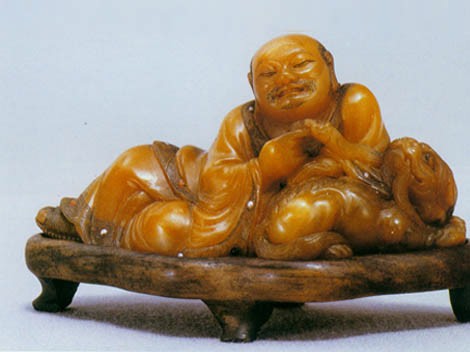
Jade ornaments largely appeared in post-Song period and prevailed in the Ming and Qing Dynasties. They were used as the jade ware which was placed on the tea table for decoration.
The jade ornaments in the Ming Dynasty were tiny and usually became the plaything on the palms of the literati. The ornaments bore the patterns such as landscape, birds and flowers, human statue and animal figure. The main raw materials included celadonish jade, blue and white jade and yellow jade.
The Qing Dynasty witnessed the emergence of large jade ornaments which were processed to be more complex and finer. In the Qing Dynasty the most reputed jade chipping center was Lane Zhuanzhu in Suzhou where the processed jade ware was quite exquisite and beautiful. The jade workshops in Yangzhou were especially skilful in chipping the mega-sized jade ware that usually weighed several thousand Jin and even more than ten thousand Jin.
The jade chipping in the Qing Dynasty was excelled in drawing the merits of traditional painting, carving, and handicraft arts as well as absorbing the artistic styles of foreign arts, therefore, it displayed the distinctive features of the time and represented the relatively high artistic accomplishments. The small jade ornaments were largely processed by original design, with the rough part being reserved and exquisitely carved. White jade, in particular the suet jade, was valued in the Qing Dynasty, and the yellow jade was rare.
